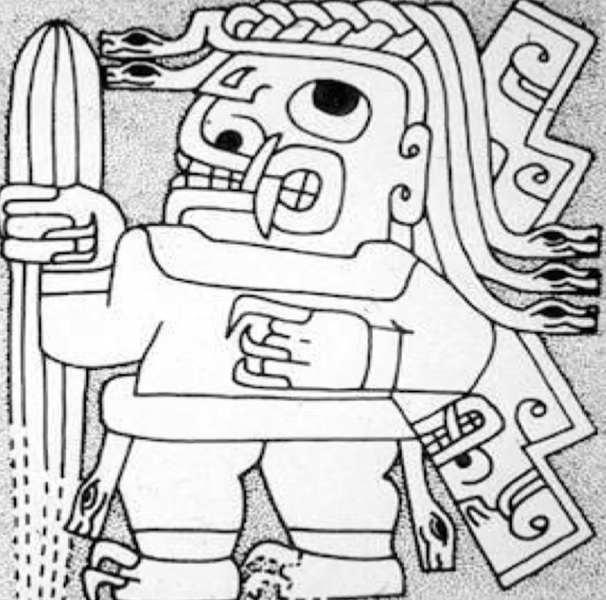
San Pedro
Synonyms: Echinopsis pachanoi, Abuelo, Grandfather, Mescalito Associated Animal Spirit: Puma
Patient(s) administered: All
San Pedro is a multi-stemmed, columnar cactus that grows in the mid-altitude range (between 1500m and 3000m) of the Andean mountain range, primarily found in Peru and Ecuador, and can grow up to 20 feet tall. Like ayahuasca, the plant is rich in a mul- titude of alkaloids, and thus is known to create a hostile environ- ment within the systems of the human body for cancer and other chronic illnesses. The best-known of these alkaloids is mescaline, a powerful psychedelic compound also found in a related cactus, peyote, (which explains that plant’s handle throughout Native American spiritual folklore, Mescalito.)
There are several ways to prepare the plant for consumption, but a common method is to slice the cactus width-wise into thin me- dallions, after which it is chopped, boiled, and dried into a ne powder. The use of San Pedro in spiritual ceremonies and sha- manic practices can be traced back over 3,000 years, and while originally a tradition of tribes indigenous to the Andes, it has been incorporated as a ceremonial teaching medicine in many diverse regions of South America - most notably in the Amazon rainforest.
A standard dose of San Pedro is typically about 5 grams of dried powder (roughly a tablespoon), and the experience can last be- tween 10 and 12 hours. The medicine’s effects vary with dosage and from person to person, but can generally be described as a vivid, illuminating state of altered consciousness. This can be ac- companied by hallucinations of sight and sound, which range from being mild to relatively intense, and a wide spectrum of height- ened emotions.
While ayahuasca is administered in nighttime ceremonies and is typically a solemn experience, San Pedro ceremonies take place during the day, and tend to take on a much more mobile, active nature. Patients can engage in interactive activities and exercises to heighten and engage the effects of the medicine and its in u- ence on the consciousness. When a participant or group is taken under the care of a shaman for a period of time, the two teaching medicines are often used in rotation to complement one another and the other plant medicines being administered. Where aya- huasca is referred to as “grandmother” for its stern, nurturing aura, San Pedro is known as “grandfather” for its more playful, active temperament.
San Pedro is a psychoactive cactus native to the Peruvian Andes. It’s also found in Argentina, Bolivia, Chile, Ecuador and is cultivated in other parts of the world. San Pedro has a long history of use in Andean traditional medicine. Archaeological evidence indicates its use for healing and religious divination in the region for over 3000 years. Today it’s widely known in these areas, where it’s used in traditional medicine and traditional veterinary medicine. In humans the San Pedro cactus is prescribed to treat a variety of medical problems such as: nervous conditions, joint problems, drug addictions, cardiac disease, and high blood pressure.
The entheogenic status of the cactus remains as strong today as it has always been. Not only do its uses in shamanic trances and healing sessions continue but it has also demonstrated effectiveness in the treatment of more recent problems such as alcoholism. The peyote cactus used widely by the North American Indians is also considered a medicine against alcoholism and this parallel is all the more striking since both cacti contain mescaline.

